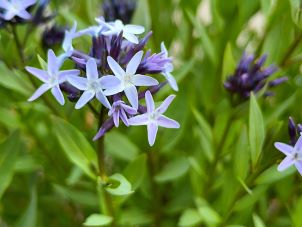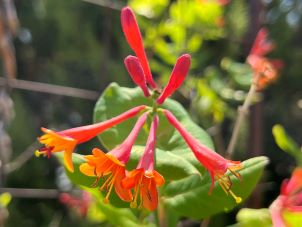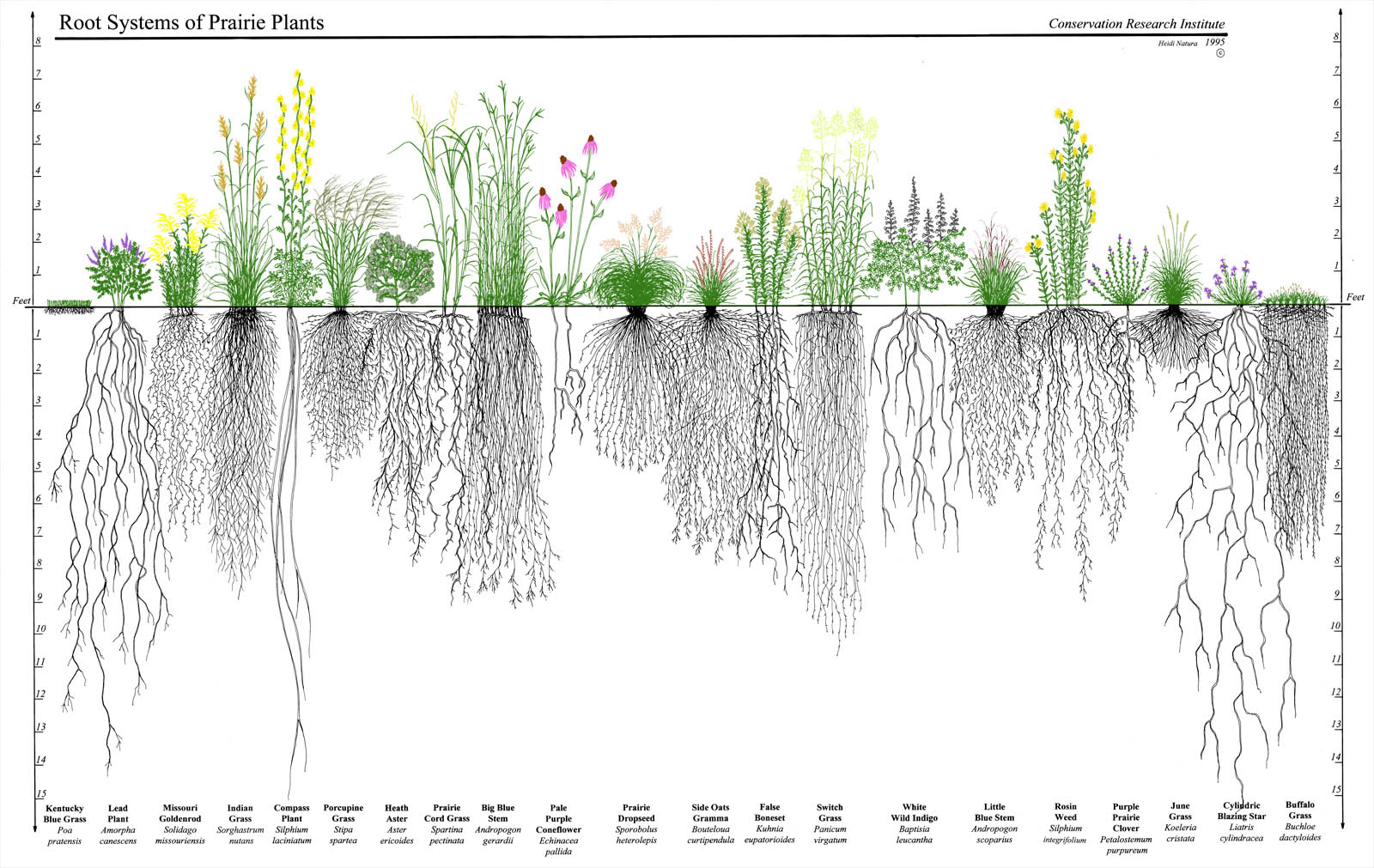- Home
- Admin
- Meetings
- Fry-Ark Project
- Projects
- Water Management
- Agriculture Conservation
- Arkansas River Basin Water Rights
- Conservation Plans
- Conservation & Education
- Education
- Fryingpan-Arkansas Project Water Import Tracking
- Inclusion into the Southeastern Colorado Water Conservancy District
- Legislation
- The Allocation of Fryingpan-Arkansas Project Water & Project Water Return Flows
- RRA
- Snow Pack Monitoring
- Water Conservation BMP Tool Box
- Winter Water Storage
- Water Wise Gardening
- Login
Turf Replacement
The origin of the lawn dates back to the European aristocracy of the Middle Ages as a status symbol. In the late 1800's wealthy families of America began to mimic the trend and the rise of suburbia anchored it as a part of our culture. Lawns provide a place to socialize, play sports and for pets as well but they are also a rather sterile monoculture and don't provide much for pollinators and other wildlife. Additionally, it is much too arid in the Southwest to have a traditional lawn without high water use for irrigation. We recommend people consider how much of their lawn they are actually using and reducing the area to that size. If you have children or pets and your lawn gets a lot of traffic then you will probably want to use Bluegrass and Fescue varieties but if your lawn is primarily aesthetic then you might be interested in native grasses such as Buffalograss and Blue Grama which are drought tolerant and can save you money on your water bill and conserve water.
Once you have a plan, the next step is to remove the lawn and decide what you want to do with your new garden space. Options for turf removal include digging it up by hand, using a motorized sod cutter, smothering it, and/or the use of nonselective herbicides. There are many options for what to fill the new blank space with such as low-growing groundcover plants, a "pocket prairie" or a "crevice garden." All of these options can help pollinators, conserve water and reduce garden maintenance.
Mechanical Method
A sod cutter can be the fastest method to remove turf ang get back to bare soil. This heavy-duty yard tool works by cutting below the grass roots and removing turf in strips. You can either hire a contractor to do this or rent one and do it yourself.
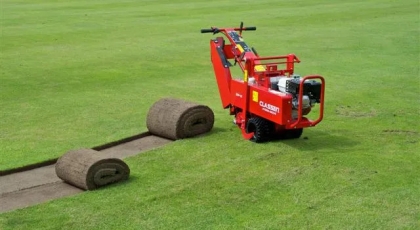
Digging Method
If you decide to dig out your grass by hand, picking the correct shovel helps a lot. A square shovel works really well for this task. If you have tougher soil or grass with deeper roots, a sharpshooter shovel is best. If your lawn is a type that spreads by runners (stolons and rhizomes) then you may need to sift the soil afterwards to prevent it from regenerating.
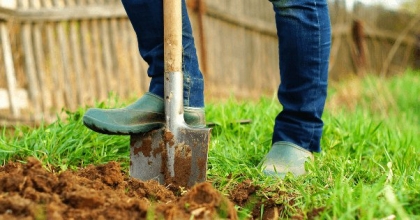
Smothering Method
Also known as "sheet mulching" or "lasagne mulching," many gardeners swear by this method of removing turf. It requires much less labor but a little more planning. The idea is to cut your grass very short with a lawnmower, cover the area with a layer of overlapping cardboard, soak it with water and then cover it with a 3 inch layer of mulch. After that you water it as needed to keep the cardboard from drying and warping. With a lack of light, the lawn will die and the cardboard and mulch will break down into a rich topsoil.

Herbicide Method
Nonselective herbicides such as glyphosate may be helpful in removing large areas of turf. It should only be applied when grasses aren't dormant and should not be applied near existing vegetation such as trees and shrubs.
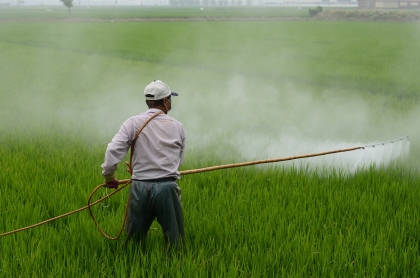
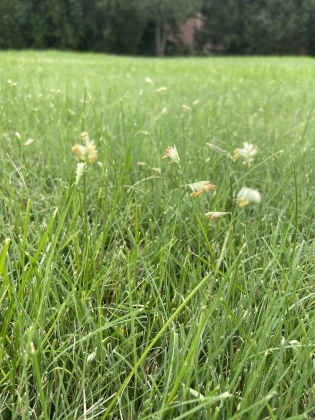
Watering one acre of grass turf with one inch of water amounts to 27,176 gallons of water. In Colorado lawns are irrigated from May to November during the active growing season and at that rate of watering totals 815,280 gallons used per acre every year. Some grasses may even require 2-3 inches per week.
Buffalograss is a popular warm-season native grass alternative that only requires 1-2 inches of water every 2-4 weeks during the summer to look acceptably green and discourage weeds.
The turf at the demonstration garden is a mix of cool and warm season native grasses. The following list shows the seed mix ratios.
SECWCD Reclamation Mix
- Blue Grama - 2.5 Ibs./acre
- Buffalograss - 13.5 lbs./acre
- Galleta - 2.25 Ibs./acre
- Indian Rice Grass - 2 lbs./acre
- Little Bluestem - 3 Ibs./acre
- Sand Dropseed - 1 Ibs./acre
- Side Oats Grama- 7.5 lbs./acre
- Western Wheat Grass - 12.5 Ibs./acre
Learn More:
Colorado State University Extension - Buffalograss Lawns
Colorado State University Extension - Native Lawn Establishment
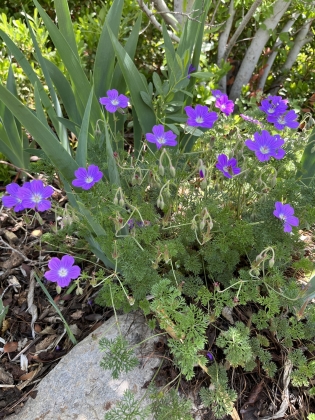
If you are looking to replace your lawn with a low-growing ornamental groundcover then please consider these plants:
- White Clover
- Speedwell
- Prairie Zinnia
- Bluemat Penstemon
- Winecup Mallow
- Dakota Mock Vervain
- Sulfur-Flower Buckwheat
- Pussytoes
- Creeping Mahonia
- Kinnikinnick
- Creeping Cinquefoil
- California Fuchsia
- Little Trudy Catmint
- La Veta Lace Geranium
- Creeping Thyme
- Mock Strawberry
Plant lists and additional information:
Colorado State University Extension - Ground Cover Plants
High Country Gardens - Groundcovers You Can Step On
Colorado Springs Utilities - Groundcover Front Yard
A pocket prairie is a small, artificially created, self-sustaining native prairie plant area typically found in urban and suburban areas made as habitat for nearby birds, insects, and mammals. Since urban areas usually have a lack of native vegetation these parcels of land are important for the local wildlife that depends on these specific plants.
Background
There are different kinds of prairies so it is important have a basic understanding of the one we live on. The land to the east of the Rocky Mountains is known as a shortgrass prairie or steppe, mostly devoid of trees except for near creeks and rivers. It is like this for several reasons like our proximity to the mountains, lack of precipitation, poor soils and our cold winters. As you go further east from Colorado, into the midwest where there is much more precipitation you end up in a tallgrass prairie which is a totally different environment. Native plants on a shortgrass prairie typically only grow to a height of 1 foot whereas on a tallgrass prairie there are plants that reach over 6 feet.
Method
The best way to plant a pocket prairie is by seed. Grass and forb mixes are available from local seed suppliers or you can make your own. You will want to prepare the site by removing invasive weeds and loosening the soil. An optional step that helps suppress weed germination is to apply a "sowing mulch" of crusher fines (small particles of crushed rock). Sowing seeds in late Fall is best for natives because many of the seeds require a period of cold stratification for germination to be successful in spring. Mix your seed with sand in a ratio of 4-5 parts sand to 1 part seed. This will ensure that you get an even distribution throughout your garden when you broadcast seeds by hand. Once spring arrives it is important to practice early weed management to prevent weeds from outcompeting the new seedlings. During seed establishment the garden bed should we watered to keep the soil moist but not waterlogged for several weeks. Native plants appreciate supplemental watering for their first year while their root systems mature. For maintenance, occasional weeding is needed until the new plants can shade out undesireable weeds. It is also a good idea to cut back the plants during their dormant phase. Late-winter is the best time to do this as many beneficial insects overwinter in the dead foliage for protection.
Plant lists and additional information:
Ladybird Johnson Wildflower Center - Make a Pocket Prairie
Colorado Native Plant Society - Low-Water Native Plants for Colorado Gardens: Southeastern Colorado
Colorado Department of Natural Resources - Native Plant Revegetation Guide
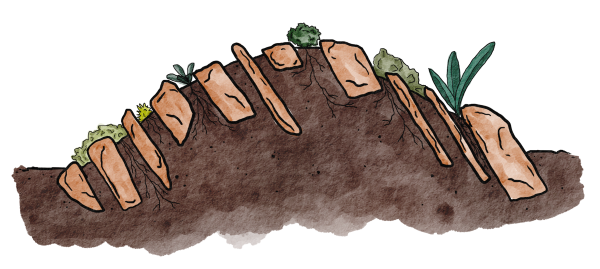
Crevice gardens are a xeric landscape feature emulating natural rocky outcrops, allowing you to incorporate plants that would be difficult to grow otherwise. The basic principles are to create an asymetrically shaped mound and then place stone slabs vertically and in parallel alignment. The soil used is primarily sand and gravel with very little organic matter. Crevice gardens can support alpine plants as well as species that do not like rich organic soils which helps add diversity to the garden. They can be a very low-water garden feature too, requiring little to no irrigation depending on which plants you choose.
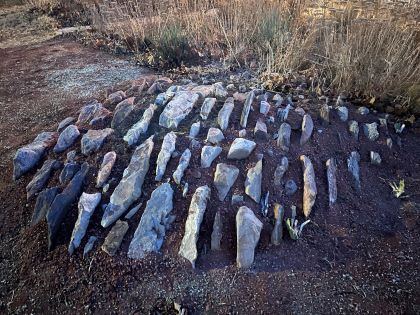
Learn More:
North American Rock Garden Society - Crevice Gardens
Penn State Extension - Crevice Gardens: Life Between the Cracks
The New York Times : Why You Should Try Crevice Gardening
Colorado Gardener - Crevice Crazy
